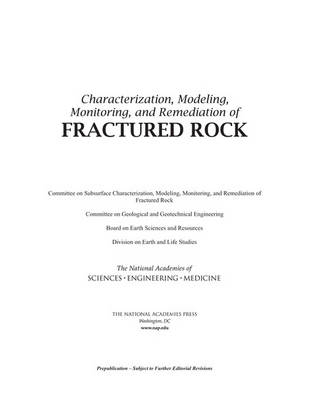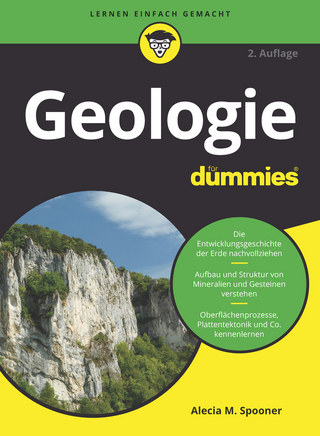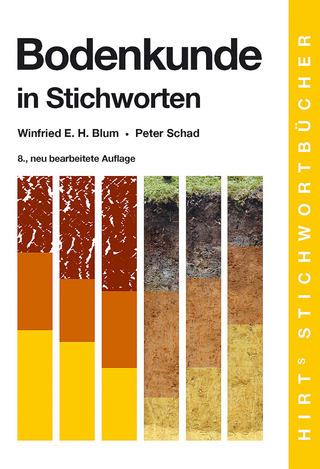
Characterization, Modeling, Monitoring, and Remediation of Fractured Rock
Seiten
2021
National Academies Press (Verlag)
978-0-309-37372-2 (ISBN)
National Academies Press (Verlag)
978-0-309-37372-2 (ISBN)
Fractured rock is the host or foundation for innumerable engineered structures related to energy, water, waste, and transportation. Characterizing, modeling, and monitoring fractured rock sites is critical to the functioning of those infrastructure, as well as to optimizing resource recovery and contaminant management. Characterization, Modeling, Monitoring, and Remediation of Fractured Rock examines the state of practice and state of art in the characterization of fractured rock and the chemical and biological processes related to subsurface contaminant fate and transport. This report examines new developments, knowledge, and approaches to engineering at fractured rock sites since the publication of the 1996 National Research Council report Rock Fractures and Fluid Flow: Contemporary Understanding and Fluid Flow. Fundamental understanding of the physical nature of fractured rock has changed little since 1996, but many new characterization tools have been developed, and there is now greater appreciation for the importance of chemical and biological processes that can occur in the fractured rock environment.
The findings of Characterization, Modeling, Monitoring, and Remediation of Fractured Rock can be applied to all types of engineered infrastructure, but especially to engineered repositories for buried or stored waste and to fractured rock sites that have been contaminated as a result of past disposal or other practices. The recommendations of this report are intended to help the practitioner, researcher, and decision maker take a more interdisciplinary approach to engineering in the fractured rock environment. This report describes how existing tools—some only recently developed—can be used to increase the accuracy and reliability of engineering design and management given the interacting forces of nature. With an interdisciplinary approach, it is possible to conceptualize and model the fractured rock environment with acceptable levels of uncertainty and reliability, and to design systems that maximize remediation and long-term performance. Better scientific understanding could inform regulations, policies, and implementation guidelines related to infrastructure development and operations. The recommendations for research and applications to enhance practice of this book make it a valuable resource for students and practitioners in this field.
Table of Contents
Front Matter
Summary
1 Introduction
2 Physical Characteristics of Fractured Rock Controlling Flow and Transport
3 Flow and Transport: Underlying Processes
4 Conceptual and Numerical Model Development
5 Methods for Site Characterization and Monitoring
6 Remediation of Fractured Rock
7 Decision Making
8 Synthesis of Recommendations
References
Appendix A: Committee Member Biographies
Appendix B: Open Session Agendas
The findings of Characterization, Modeling, Monitoring, and Remediation of Fractured Rock can be applied to all types of engineered infrastructure, but especially to engineered repositories for buried or stored waste and to fractured rock sites that have been contaminated as a result of past disposal or other practices. The recommendations of this report are intended to help the practitioner, researcher, and decision maker take a more interdisciplinary approach to engineering in the fractured rock environment. This report describes how existing tools—some only recently developed—can be used to increase the accuracy and reliability of engineering design and management given the interacting forces of nature. With an interdisciplinary approach, it is possible to conceptualize and model the fractured rock environment with acceptable levels of uncertainty and reliability, and to design systems that maximize remediation and long-term performance. Better scientific understanding could inform regulations, policies, and implementation guidelines related to infrastructure development and operations. The recommendations for research and applications to enhance practice of this book make it a valuable resource for students and practitioners in this field.
Table of Contents
Front Matter
Summary
1 Introduction
2 Physical Characteristics of Fractured Rock Controlling Flow and Transport
3 Flow and Transport: Underlying Processes
4 Conceptual and Numerical Model Development
5 Methods for Site Characterization and Monitoring
6 Remediation of Fractured Rock
7 Decision Making
8 Synthesis of Recommendations
References
Appendix A: Committee Member Biographies
Appendix B: Open Session Agendas
1 Front Matter; 2 SUMMARY; 3 1 INTRODUCTION; 4 2 PHYSICAL CHARACTERISTICS OF FRACTURED ROCK CONTROLLING FLOW AND TRANSPORT; 5 3 FLOW AND TRANSPORT - UNDERLYING PROCESSES; 6 4 CONCEPTUAL AND NUMERICAL MODEL DEVELOPMENT; 7 5 METHODS FOR SITE CHARACTERIZATION AND MONITORING; 8 6 REMEDIATION OF FRACTURED ROCK; 9 7 DECISION MAKING; 10 8 SYNTHESIS OF RECOMMENDATIONS; 11 REFERENCES; 12 APPENDIX A COMMITTEE MEMBER BIOGRAPHIES; 13 APPENDIX B OPEN SESSION AGENDAS
| Erscheinungsdatum | 09.02.2016 |
|---|---|
| Verlagsort | Washington |
| Sprache | englisch |
| Maße | 216 x 279 mm |
| Themenwelt | Naturwissenschaften ► Geowissenschaften ► Geologie |
| ISBN-10 | 0-309-37372-7 / 0309373727 |
| ISBN-13 | 978-0-309-37372-2 / 9780309373722 |
| Zustand | Neuware |
| Informationen gemäß Produktsicherheitsverordnung (GPSR) | |
| Haben Sie eine Frage zum Produkt? |
Mehr entdecken
aus dem Bereich
aus dem Bereich
Baugruben und Gründungen
Buch | Hardcover (2024)
Springer Fachmedien Wiesbaden GmbH (Verlag)
59,99 €


